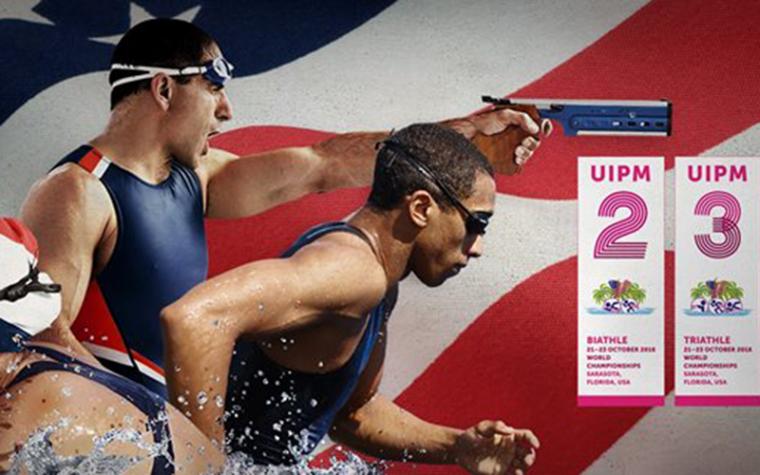
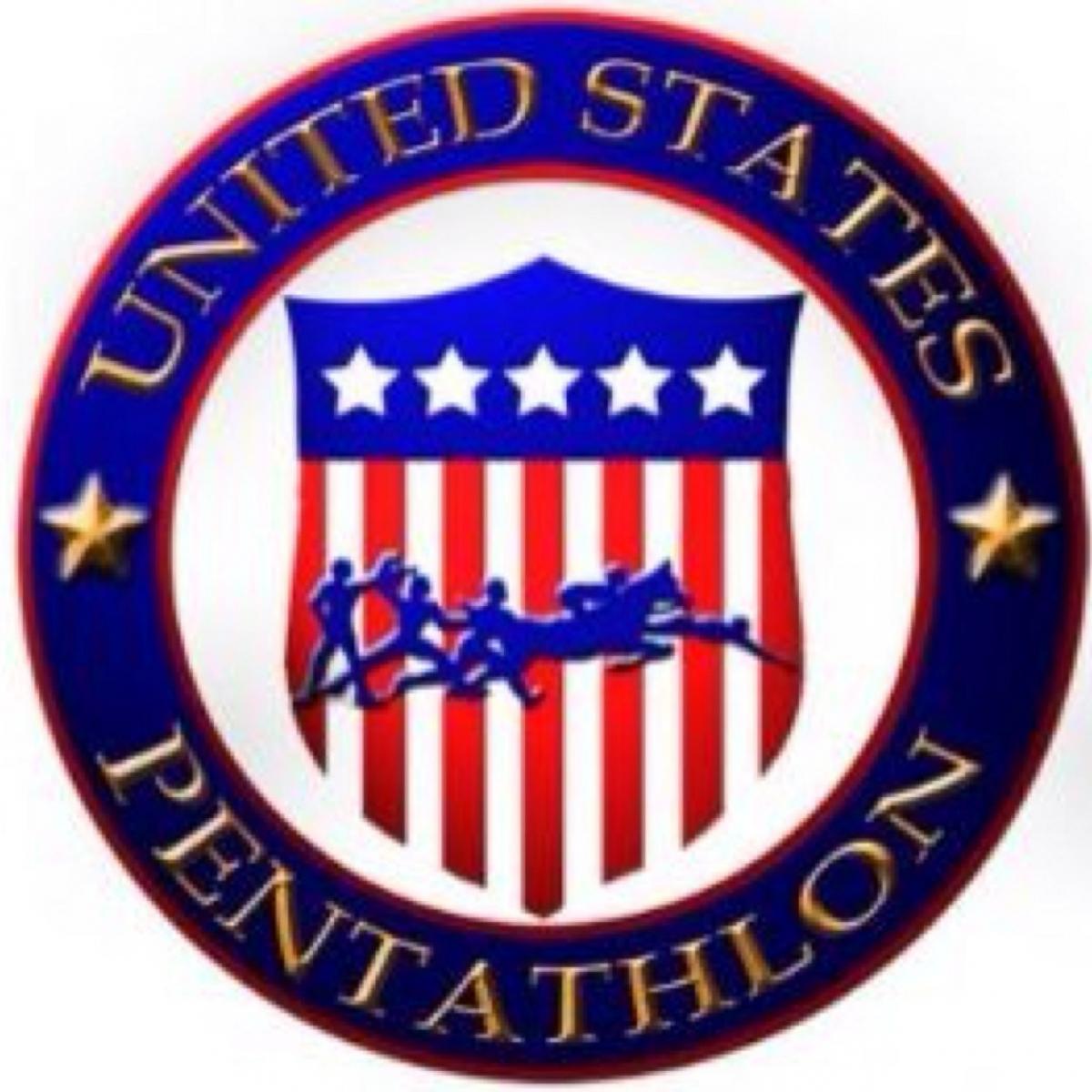 www.teamusa.org/USA-Modern-Pentathlon
www.teamusa.org/USA-Modern-Pentathlon
USA Pentathlon is the national governing body of modern pentathlon, which has been contested as an Olympic sport since 1912. Modern pentathlon takes its five-sport history from military endeavors, when a messenger would, at least theoretically, have to ride an unfamiliar horse across unknown terrain, defend himself by both shooting a pistol and using a sword, and then both run and swim in order to deliver the message.
The current version of the sport includes fencing (with epee), 200-meter freestyle swimming, show jumping, and a final combined event of pistol shooting and a 3,200-meter (4 x 800) cross-country run. The sport differs from other equestrian endeavors in that it is a "catch ride" event where riders must mount a horse he or she has never ridden before, and are given only a few minutes to get used to the animal before entering the show ring to compete. Union Internationale de Pentathlon Moderne (UIPM) is the international governing body for the sport.
Sports Destination Management: With the Rio Olympics having concluded so recently, there was new attention given to the sport. Does modern pentathlon see growth as a result?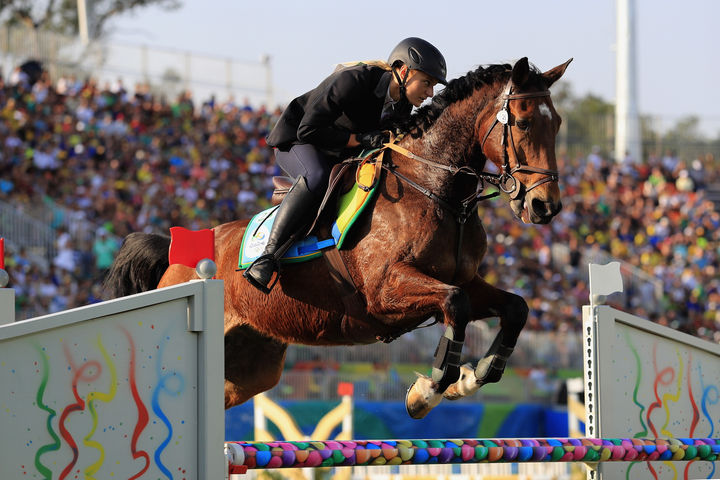
Tom Shepard: Yes, there’s always a spike around the Olympic period.
SDM: How did the U.S. do this year?
Shepard: There were some things that were totally unexpected. We went into this Olympic Games with a woman who was ranked among the top five in the world, but shortly before the Games, she broke her ankle. She competed in Rio with three new pins in her ankle, and although she showed determination and grit , unfortunately she could not give the performance we were all hoping for. At the same Games, though, we had a male U.S. athlete who gave an unexpectedly great performance and finished 10th.
SDM: How do the U.S. athletes generally do on the international stage in this sport, and how does that affect the ability to attract new members?
Shepard: We have world-ranked pentathletes now and we’ve seen that success breeds awareness and awareness breeds success.
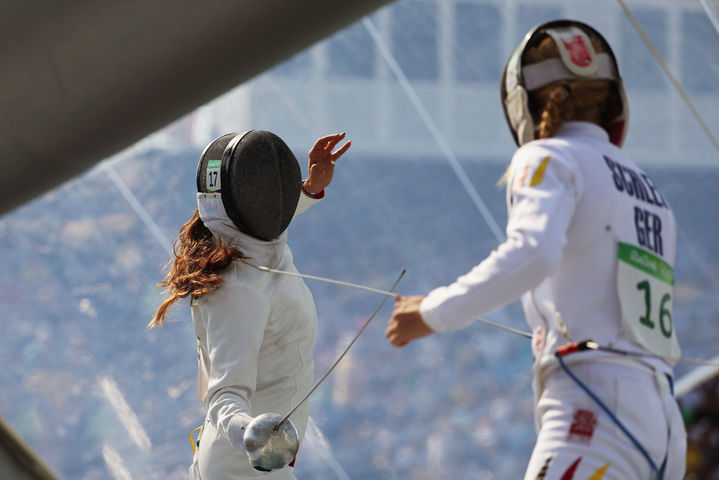 SDM: It’s certainly an unusual sport.
SDM: It’s certainly an unusual sport.
Shepard: But it’s a fascinating sport and it’s disproportionately visible in the IOC. It has patrons like Prince Albert of Monaco who really do support and promote it. As a brand, it’s kind of fascinating; I like to refer to it as modern-day pirates: you have to be able to swim, shoot a pistol, run, ride a horse and use a sword. If we can market it that way, we can keep it interesting and relevant to the public, particularly to youthful athletes, who are our future.
Pentathletes might be the world’s most versatile athletes – they have to be intelligent as well as athletic. They have to have a lot of technical skill in some very, very different disciplines that require completely different muscle sets. The people in this sport are training year-round because they are training in five events.
Rob Stull: The founder of the modern Olympic Games, Baron Pierre de Coubertin, developed the sport because after looking at athletes training for the Olympics, he decided they were far too specialized. He believed pentathlon was the test of the complete athlete.
SDM: The sport was added to the Games in 1912. Has it changed since that time?
Shepard: Yes – the sport has kept pace with changes in society. In the pistol shoot, for instance, we went from using bullets to a laser pistol.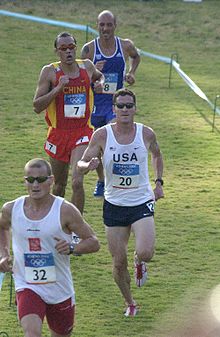
SDM: Because it’s contested so many ways, does it affect how individual athletes are doing at any given time?
Shepard: Yes, there are a lot of lead changes and it’s very exciting.
SDM: Where do you find athletes for the sport?
Stull: We find a lot in swimming, and believe it or not, we also find a lot in Pony Club because it has an event called Tetrathlon, where people run, ride, swim and shoot - but not fence.
SDM: Hosting modern pentathlon makes for some unique challenges; as an example, how do you find the right type and number of horses for the show jumping event when you come into a new city? Obviously, not just any horse will do.
Shepard: That is one of the biggest challenges. The horses used in competition have to be of a special caliber in order to be able to jump as required; in other words, they have to be great athletes too. You have to work with people in the area of the event who are very well-connected in the horse industry, and who have a great network of owners and riders to help you source the horses you need.
SDM: Is the sport active throughout the country or are there specific areas where it is very popular?
Shepard: There are some very active clubs around the country – San Antonio is one, but there are others. There are definitely pockets of activity around the country.
SDM: How are sites for events chosen? Has the U.S. hosted events on the international level?
Shepard: The U.S. has hosted the sport’s World Cups, World Cups Finals and we're hoping to host the World Championships. There are also subsets of the sport going on, such as biath and triath – but not the kind people might automatically think of; these are biathlons and triathlons with the disciplines found in modern pentathlon.
SDM: What is the bidding process like for events?
Shepard: We bid on events through the UIPM, then if we get those events, we work to find host cities. A lot of cities have recognized that if they can bring in a World Cup sporting event, it helps build equity in their name.
SDM: What cities have you had success with so far?
Shepard: We have used a number of cities, including Pomona, California; Sarasota, Florida; Charlotte, North Carolina; and Palm Springs, California. They have very good facilities and they are all attractive cities for the athletes and visitors
SDM: It must be difficult to find exactly the right facilities.
Shepard: In time, all five events will be in the same stadium, but that is not how the sport is presented right now. Obviously, we need facilities for swimming, cross-country running, fencing, pistol shooting and show jumping, and those might be spread out across a city.
Beyond the facilities, we’re looking for housing for athletes, transportation, a fleet of very, very good horses and most importantly, an engaged community. We’d like to see a huge turnout of youth who can support this sport and become engaged with it. We also need a good local organizing committee with a professional staff because not everything can be done by volunteers
Stull: One of the first things we often hear from potential destinations is "We can't host that; we don't have stables." We can build what we need almost anywhere, so we encourage people to apply anyway. We've built our facilities on parking lots.
SDM: What is the economic impact of these types of events?
Stull: It's significant. In Sarasota, the event brought in over $10 million.We were generating between 5,000 and 6,000 room nights. Everyone was from out of town.
SDM: What benefit does the presence of international events in modern pentathlon events in the U.S. have?
Shepard: The Fairplex in Pomona is a phenomenal facility, and it’s aligned with the bid package for Los Angeles for the 2024 Olympics. In addition, the area has great hotels, and hosting World Cup events there is helping build brand awareness and generating traffic for the local businesses, and it’s good to be a part of that.

